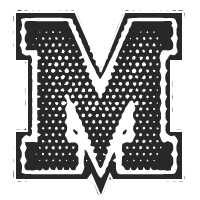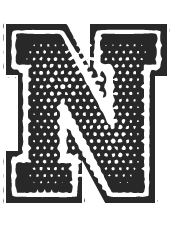Emergency Action Plan
Introduction
The purpose of the Emergency Action Plan (EAP) is to guide athletic personnel and emergency medical services in responding to emergency situations when they occur. It is essential that the Athletic Department have a developed emergency plan that identifies the role of each member of the emergency response team, emergency communications, the necessary emergency equipment and the emergency protocol for each sporting venue.
Emergency Personnel
Certified athletic trainers (ATC’s) are employed to provide leadership in the health care of the student-athlete including the emergency management of injuries/illnesses during athletic participation, under the direction of the medical advisor. Coaches and staff are required to be trained and maintain certification in first aid, CPR, Automatic External Defibrillator (AED), and the prevention of disease transmission (blood borne pathogens). These requirements are in keeping with OSHA standards and with the Occupational Safety and Health Office at Wooster School. This training should be completed prior to being assigned to the emergency care team. However, formal training must be conducted for all new personnel within six months of their employment or assignment to the emergency care team. Their role is to provide assistance to the ATC as part of the emergency medical team in the event of an emergency. Annual review and update of the EAP is conducted with all athletic personnel so that each member o f the emergency care team is aware of their respective role in the event of an emergency. The following roles are included in the EAP:
1. Immediate care of the injured/ill athlete(s)
2. Retrieval of emergency equipment
3. Activation of the Emergency Medical System (EMS)
4. Directing EMS to the scene
Immediate care of the injured/ill athlete
There shall be at least on trained individual at all practices, competitive events, conditioning, and skill sessions. The minimal training is first aid, CPR and the prevention of disease transmission (blood borne pathogens). These individuals include the ATC, coaches, and staff supervisors. Appropriate emergency first aid steps must be taken in accordance with the level of certification that each trained member of the emergency care team has. The Injury/Illness Emergency Protocols are included at the end of this document.
Retrieval of Emergency Equipment
Appropriate emergency equipment must be retrieved from the designated area at the athletic venue and brought to the scene by a member of the emergency care team.
Activation of EMS
One member of the emergency care team will be directed to utilize the emergency communication device (cellular phone or stationary land line telephone) to contact EMS or a designated individual. This individual shall be trained in activating EMS. They must be calm, have a full understanding of the emergency, communicate well, and be able to identify the location of the emergency. They also must be familiar with use of the emergency communication devices and where they are located if not on their person.
Directing EMS to the Scene
An athletic trainer, coach, or staff/faculty member will be the primary person(s) to direct the local rescue squad to the emergency scene. However, a member of the emergency care team or any member of the Wooster School staff may go to the appropriate location to assist the EMS to the scene. When needed this person(s) is responsible for creating a clear path for the safe EMS travel to the injured student-athlete.
Emergency Communications
A cellular telephone or stationary land line telephone is on-site at each athletic practice and competitive event which allows direct contact with EMS in the event of serious or life-threatening emergencies. In the event that an ATC is not on-site for an athletic practice or competitive event, the head coach or qualified designee shall have a cellular telephone, or immediate access to a stationary land line telephone for emergency use. When activating EMS via cellular telephone or stationary land line telephone, dial 911.
Emergency Equipment
The appropriate emergency equipment must be on-hand at all athletic practices and competitive events. All assigned emergency care personnel should be aware of the location and function of all emergency equipment. Emergency supplies and equipment include, portable automatic external defibrillator, team medical kits (e.g. dressings, bandages, tape, sling, elastic wraps, etc.), ice chest, body substance isolation (BSI) materials (protective gloves, gauze neutralizing solution, and spill kit), vacuum splints, and crutches. Training and update on the proper use of said equipment is conducted annually prior to the beginning of the fall athletic season for proper function and availability. (See EAP for location of equipment available at each athletic venue.)
Transportation
Emergency transportation of an injured/ill student-athlete is provided via the EMS system. A student-athlete’s parent(s)/guardian(s) may provide transportation to a local emergency room for a student-athlete with a non-life threatening injury/illness. A member of the emergency care team may provide transportation to the emergency room only if adequate emergency care coverage is maintained at the athletic venue.
EAP in the Event of Lightening
The following steps are modified from those recommended by the NCAA and the National Severe Storms Laboratory (NSSL) in the event of lightening or severe storm warming:
- A member of the emergency care team (ATC, coach, or staff member) is designated to monitor threatening weather conditions and make the decision to remove a team or individuals from an athletic venue or event. In the event that the ATC is not at the practice/game location the Coach is responsible for the decision to remove the team(s) to the designated safe location.
- Monitoring should include obtaining a weather report prior to a practice or competitive event. Be aware of potential thunderstorms that may form. Be aware of National Weather Service-issued (NWS) thunderstorm “watches” and “warnings” as well as the signs of thunderstorms developing nearby. “Watch” means conditions are favorable for severe weather to develop in an area; a “warning” means that severe weather has been reported in an area and for everyone to take proper precautions.
- Be aware of how close lightening is occurring. Count the seconds using the flash-to-bang (flash of lightening-to-clap of thunder) method. Count the seconds and divide by five, which gives you the distance, in miles, that the lightening strike occurred. By the time the flash-to-bang count is 30 seconds; all individuals should be moved to safety. Be alert at the first sign of lightening or thunder and judge the time necessary to evacuate all individuals from the athletic venue. (See EAP’s for each of the athletic venues for safe location.)
Wooster School Athletic Injury/Illness Emergency Protocol
The following procedures are to be carried out by the certified athletic trainer. In the event that no certified athletic trainer is available on-site at a specific practice or event, the head coach and/or designee shall perform the duties listed below.
Contests and practices hosted at Wooster School or “home” sites:
1. MEDICAL EMERGENCIES (breathing cessation, sudden cardiac arrest, severe bleeding, concussion with loss of consciousness, suspected neck or spinal injury, fracture, dislocation, eye or face injury, heat related illness, any other injury or illness resulting in poor vital signs such as decreased blood pressure, weak pulse, or signs of shock).
Follow the Emergency Action Principles (first aid principles) and provide appropriate care.
Notify EMS.
Monitor vital signs.
Calm and reassure the athlete.
Notify certified athletic trainer as soon as possible.
Provide follow-up care as necessary.
2. NON-EMERGENCIES (sprains, strains, concussion [with no loss of consciousness], illness, abrasions, minor cuts, contusions, etc.).
Provide appropriate first aid care.
Notify certified athletic trainer.
Send the athlete to the appropriate medical care facility (if unable to contact a certified athletic trainer and/or unsure of the severity of the injury).
Provide follow-up care as necessary.
3. In the event a student is ill or injured and is transported to a hospital/emergency facility while participating in a Wooster School sponsored event off campus, the following guidelines should be followed:
Notify Wooster School’s athletic director and athletic trainer of the student’s name, a brief description of the injury/illness, and the name and telephone number of the hospital/emergency facility where the student has been transported.
The athletic director and athletic trainer will receive all phone calls from parents or guardians and refer them to the hospital/emergency facility as appropriate.
It is the responsibility of the hospital/emergency facility to notify the student’s parents or guardians with the latest and most accurate information concerning the student’s condition.
4. NOTE: When a team/program practices or hosts contests AT “HOME” SITES which are LOCATED OFF-CAMPUS (e.g. golf) the same guidelines as outlined above should be followed. It is imperative that the head coach locates the nearest accessible telephone on-site prior to beginning the practice or contest. In the event of a medical emergency, dial 911 to summon EMS personnel. If injury appears to be non-emergent, make arrangements to have the athlete transported back to the athletic training room for further assessment and treatment as soon as possible but provide necessary first aid immediately on-site.
B. For contests and practices occurring AWAY FROM Wooster School:
1. MEDICAL EMERGENCIES
Follow the Emergency Action Principles (first aid principles) and provide appropriate care.
Ask for the host certified athletic trainer and follow the host institution’s emergency action plan.
If athlete must be transported to an emergency facility, find out what facility they will be going to and then make arrangements with the Wooster School head coach to pick up the athlete after the contest ends.
Do not travel via EMS transport to the emergency facility with the athlete. Staying with the rest of the team is the priority. In the event that more than one assistant coach or designee is available, it is permissible to accompany the injured athlete to the emergency facility if requested by the athlete or head coach.
Notify the certified athletic trainer as soon as possible.
2. NON-EMERGENCIES (able to return to Wooster School without immediate medical care)
Provide appropriate first aid care.
Return to Wooster School and follow non-emergency management protocols established for home events.
Notify the certified athletic trainer upon returning.
C. MISCELLANEOUS
In the event of hospitalization or surgery, hospital personnel or the Wooster School certified athletic trainer or athletic director would notify the student-athletes’ parent(s) or guardian(s) as necessary and appropriate. Medical confidentiality will and must be maintained in all cases.










